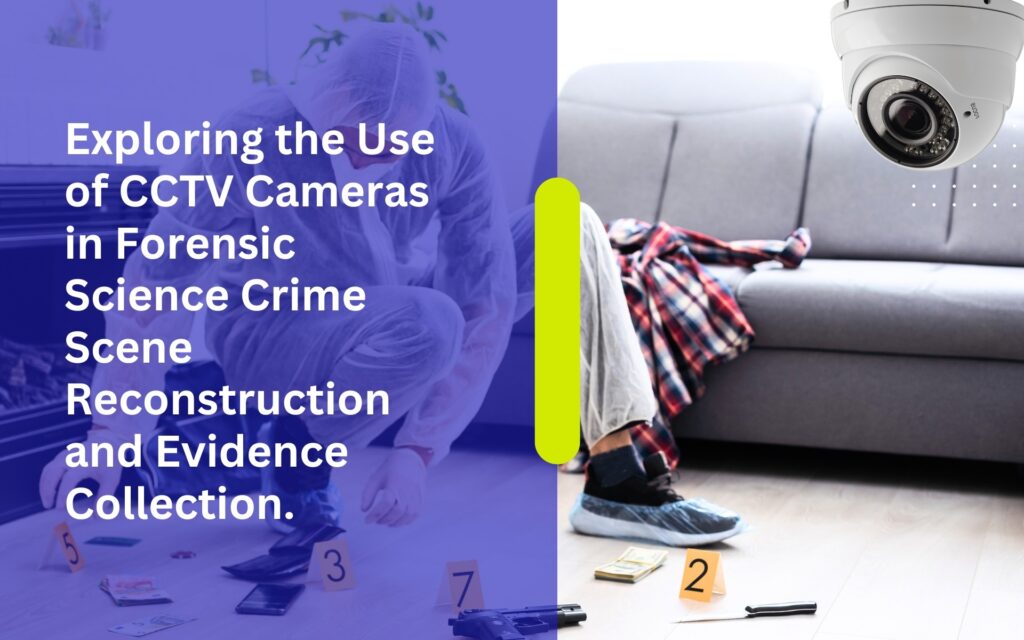Celebrating a Year of Growth and Success at InstallersPH IT Solutions. Introduction. As the year comes to a close, InstallersPH IT Solutions takes a moment to reflect on a journey defined by …
Exploring the Use of CCTV Cameras in Forensic Science Crime Scene Reconstruction and Evidence Collection.

Introduction
In the intricate web of forensic science, every detail matters. From the faintest trace of evidence to the subtlest clue, each piece plays a crucial role in unraveling the mysteries of a crime scene. Among the array of tools available to forensic investigators, closed-circuit television (CCTV) cameras stand out as invaluable assets, offering a unique perspective and a wealth of information. In this comprehensive exploration, we delve into the multifaceted role of CCTV cameras in forensic science, focusing on their significance in crime scene reconstruction and evidence collection.
Understanding CCTV Cameras in Forensic Science
CCTV cameras, originally designed for surveillance and security purposes, have found a prominent place in the realm of forensic science. These cameras, strategically placed in various locations, capture real-time footage of activities, interactions, and events, providing a visual record that can be instrumental in criminal investigations. With advancements in technology, modern CCTV systems offer high-definition imaging, wide-angle lenses, night vision capabilities, and remote access, enhancing their efficacy in forensic applications.
Crime Scene Reconstruction: Piecing Together the Puzzle
One of the primary functions of CCTV cameras in forensic science is crime scene reconstruction. By meticulously analyzing CCTV footage, investigators can recreate the sequence of events leading up to, during, and after the commission of a crime. Every movement, gesture, and action captured by the cameras serves as a vital clue in reconstructing the narrative of the crime scene. This process allows investigators to gain insights into the dynamics of the incident, the roles of individuals involved, and the potential motives behind the crime.
The Role of CCTV Cameras in Evidence Collection
In addition to aiding in crime scene reconstruction, CCTV cameras play a pivotal role in evidence collection. The footage captured by these cameras often serves as tangible evidence in criminal proceedings, offering a visual representation of events that can corroborate witness testimonies, support forensic analysis, and establish timelines. From identifying suspects and vehicles to documenting the disposal of evidence, CCTV footage provides invaluable documentation that can strengthen the prosecution’s case and facilitate the pursuit of justice.
Challenges and Limitations
Despite their utility, CCTV cameras in forensic science are not without challenges and limitations. Poor camera placement, low resolution, glare, and obstruction can compromise the quality and reliability of footage, hindering its usefulness in investigations. Additionally, privacy concerns, legal restrictions, and ethical considerations surrounding the use of CCTV cameras require careful navigation to ensure adherence to established protocols and regulations. Moreover, the proliferation of digital manipulation techniques poses a threat to the authenticity and integrity of CCTV footage, necessitating robust authentication measures to safeguard its reliability as evidence.
Technological Innovations and Future Directions
The evolving landscape of technology continues to shape the capabilities of CCTV cameras in forensic science. Innovations such as artificial intelligence (AI), facial recognition software, and cloud-based storage systems hold promise for enhancing the efficiency and effectiveness of CCTV-based investigations. AI algorithms can automate the process of analyzing vast amounts of footage, identifying patterns, and detecting anomalies with unprecedented speed and accuracy. Furthermore, advancements in facial recognition technology enable investigators to swiftly identify suspects and persons of interest, facilitating swift apprehension and case resolution.
Best Practices and Recommendations
To harness the full potential of CCTV cameras in forensic science, adherence to best practices is essential. Proper installation, maintenance, and calibration of cameras ensure optimal performance and reliability. Clear signage indicating the presence of CCTV surveillance serves as a deterrent to potential perpetrators while also alerting individuals to the recording of their activities. Furthermore, collaboration between law enforcement agencies, forensic experts, and technology providers fosters synergy and innovation, leading to continuous improvement in CCTV-based forensic investigations.
Conclusion
In the relentless pursuit of truth, CCTV cameras stand as unwavering sentinels, capturing the fleeting moments that define the boundaries between innocence and guilt, between conjecture and certainty. As we continue to explore the intersections of technology and forensic science, the eyes of these cameras remain ever watchful, guardians of justice in a world where truth is the ultimate arbiter of right and wrong.
With each technological advancement and every meticulous analysis, the role of CCTV cameras in forensic science grows more pronounced, offering new avenues for investigation, new insights into human behavior, and new possibilities for justice. As we peer through the lens of progress, let us remember the enduring importance of vigilance, integrity, and the relentless pursuit of truth. In the hands of skilled investigators and conscientious practitioners, CCTV cameras become not just tools of surveillance, but instruments of accountability, illuminating the path toward a safer, more just society.
Related Articles
Notice to the Public: Holiday Vacation Advisory of InstallersPH IT Solutions. Introduction. InstallersPH IT Solutions is committed to providing reliable and professional IT services to all our valued clients and partners. As …
The On-the-Job Training Experience of Sherlyn Linao. Introduction On-the-Job Training (OJT) is an essential part of a student’s academic development, providing practical exposure to real workplace environments. It allows interns to apply …



